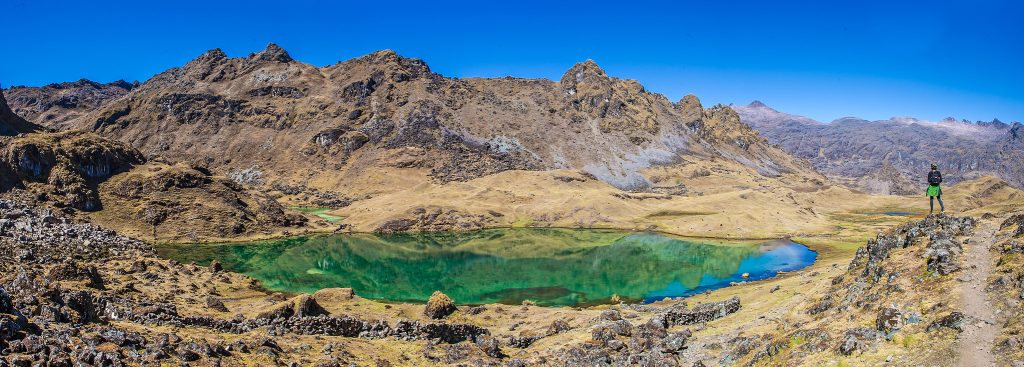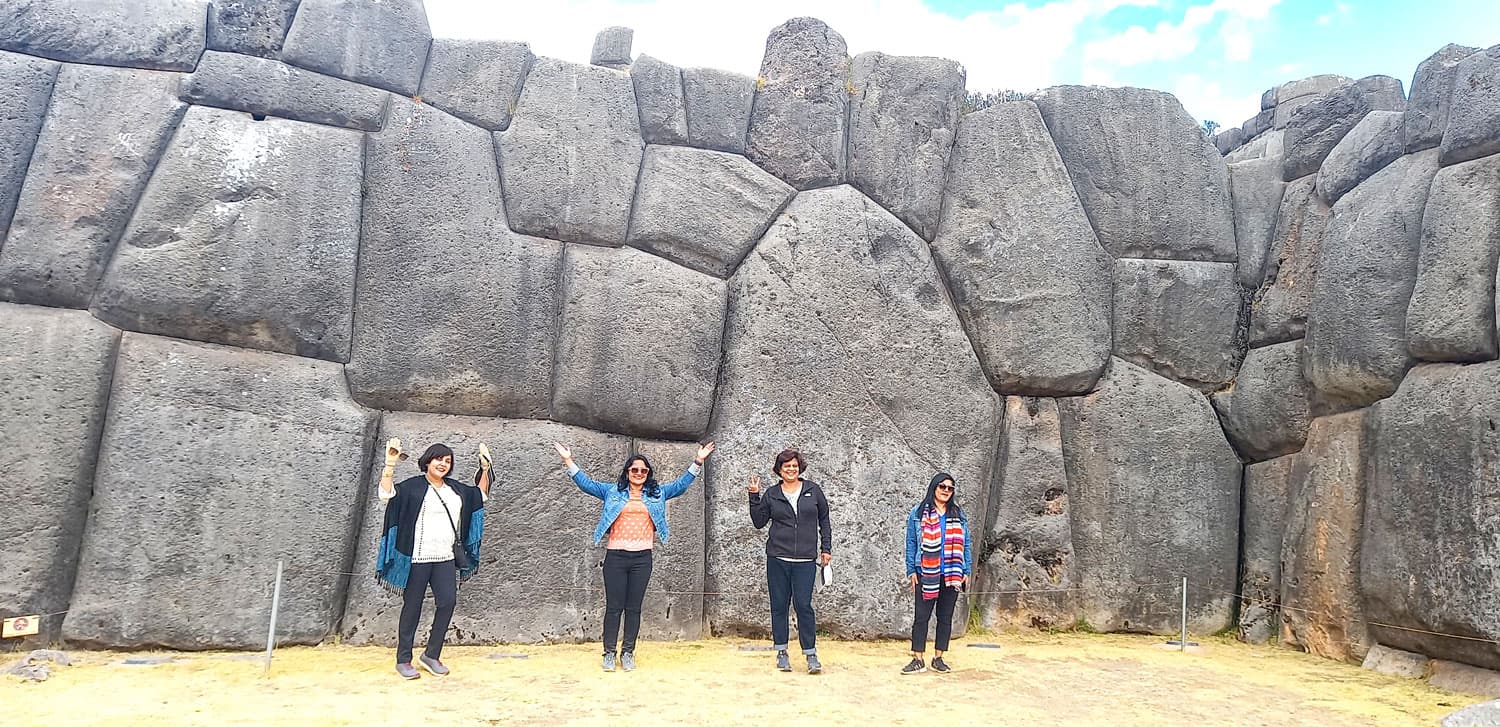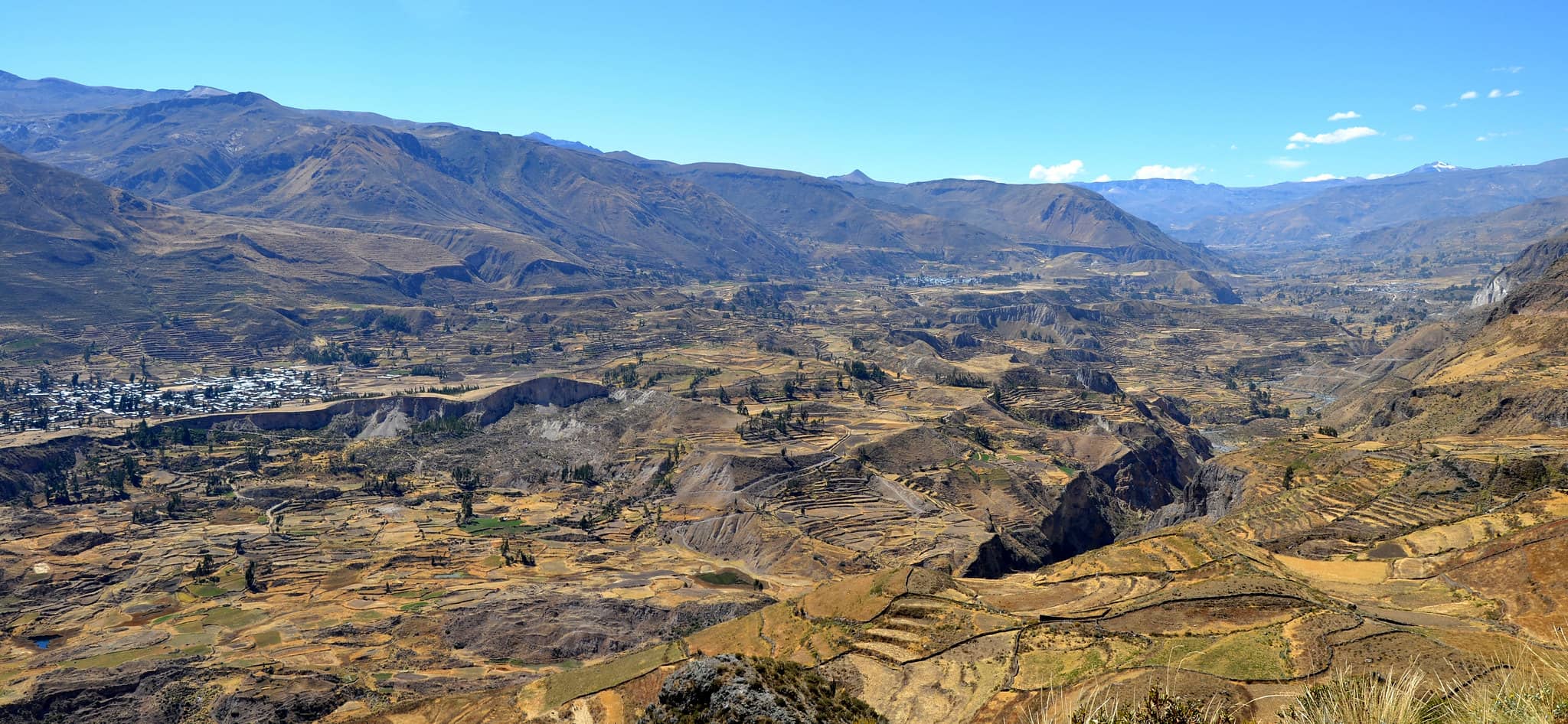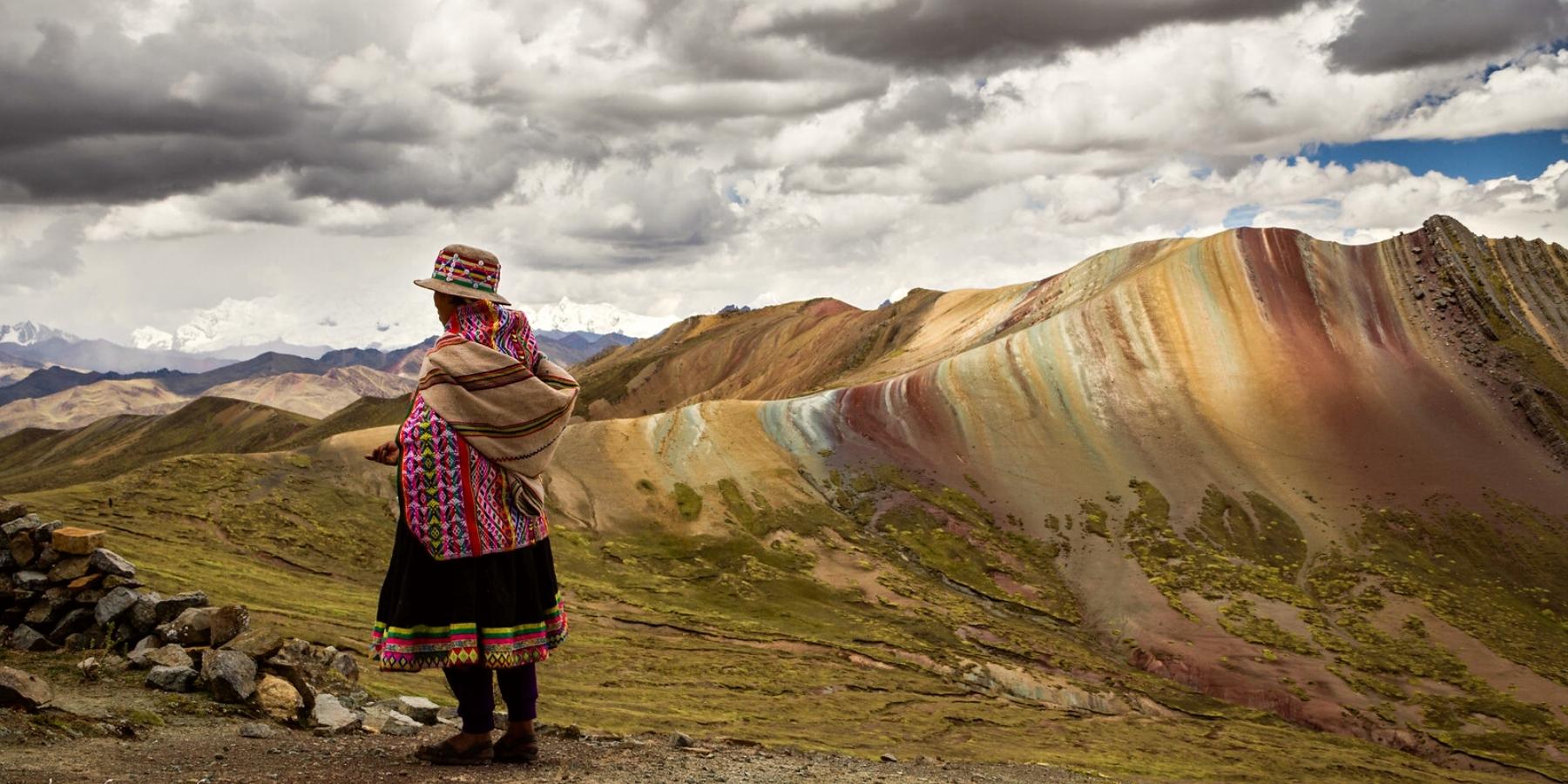The Lares Trek

The Lares Trek is a popular multi-day hike in the Peruvian Andes that takes you through the beautiful and remote Lares Valley. The trek is an alternative to the more well-known Inca Trail and offers a more authentic and less crowded experience of the region. The Lares Trek typically starts in the town of Lares, located in the Cusco region of Peru, and follows a route through the Andes, passing through small villages, lush valleys, and high mountain passes.
The Lares Trek is typically a 3- to 4-day hike, depending on the route and the pace of the group. The trek can be challenging due to the high altitude and rugged terrain, but it is also very rewarding, as it takes you through some of the most beautiful and unspoiled parts of the Peruvian Andes. Along the way, you will have the opportunity to see a wide range of wildlife, including alpacas, llamas, and condors, and to visit local communities and learn about their way of life.
The Lares Trek is a great option for those looking for a more authentic and off-the-beaten-path adventure in Peru. It is important to be in good physical condition and to be properly acclimatized to the high altitude before attempting the trek. It is also recommended to hire a reputable local guide and to bring all necessary gear and supplies.
What to Expect on the Lares Trek
Knowing what to expect can help you better prepare for your trek an help you decide if this is the best option for you.
Stunning Views
Along the Lares Trek trail you can expect to see some truly beautiful scenery and landscapes in the Andean mountains. It’s wonderful to be surrounded by snowy mountain peaks while enjoying rivers, waterfalls, and lagoons.
Plenty of Flora and Fauna
You’ll get plenty of opportunities to see some local flora and fauna including alpacas, llamas, and sheep.
A Close Up Experience of Andean Life
This Lares trek gets you up close and personal with those that live in the rural Andean communities. Spend some time with them and see how they work the land as well as create some amazing textile pieces.
To Feel Tired
Even if you walk at a slow pace, you can expect to feel a little tired at the end of each day. You’ll spend many hours walking at high altitude, which can exhaust the fittest of people. Make sure to pace yourself and keep hydrated.
A Real Adventure
This trek is off the beaten path and away from the majority of tourists. This makes for a wild adventure in the middle of the mountains.
An Amazingly Clear Sky
The sky at night in the Andes tends to be open and very clear. This is a great chance to look up at the stars and relax while learning a little about Inca astrology.
Natural Thermal Hotsprings
Most Lares treks pass by Lares town so you can soak in the thermal Hotsprings. It is a very charming place to relax, but before starting the tour, ask your tour operator if there will be time for it, as mentioned in route 3, the hike begins away from Lares.

What is the best time for the Lares Trek to Machu Picchu
The best time you can choose to do the Lares Trek is during the dry season, which runs from May to September. This is the busiest trekking time in the region, particularly on the Classic Inca Trail, where the months in advance are exhausted.
****Naturally, during the height of the high season the path may be busy. That said, there are so many variations on the Lares trail that, in general, the routes never feel crowded.
However, during the last months of the dry season, from April to October, the paths of Lares are particularly quieter and the weather is usually very pleasant. If you travel in June, we recommend you to book the Inti Raymi 2023 – 2024 Tour that takes place in June 24th, and also hike the Palcoyo Mountain Tour, which is an incredible Rainbow Mountain located in the Andes.
During the month of November, the probability of finding rain is relatively high. We suggest avoiding the months of December to March, since the rain makes the path really unpleasant and visibility is often low due to the morning and afternoon fog.
Temperatures throughout the year are moderate, during the afternoon temperatures rise, and the cold comes during the night and early in the morning. Layered clothing is important (see the packing list below).
Microclimates characterize the Andes, so it is possible to rain throughout the year. Always carry rain gear.
What to Bring to Lares Trek
If you are planning to do the Lares Trek, it is important to come prepared with the right gear and supplies to ensure a safe and comfortable journey. Some of the things you should consider bringing include:
- Proper clothing: Bring layers of clothing to keep warm in the cool mountain weather, including a waterproof jacket, hat, gloves, and thermal underwear.
- Footwear: Wear sturdy, comfortable hiking boots with good support and traction.
- Sleeping bag: The temperature can drop significantly at night, so a warm sleeping bag is essential.
- Backpack: Bring a sturdy and comfortable backpack to carry all your gear, with a capacity of at least 50 liters.
- Water and snacks: It is important to stay hydrated and nourished during the trek, so bring plenty of water and energy-rich snacks such as nuts, dried fruit, and energy bars.
- First aid kit: Pack a basic first aid kit with essentials such as painkillers, bandages, and blister treatments.
- Sun protection: The sun is strong at high altitude, so bring sunscreen, sunglasses, and a hat to protect yourself from the sun’s rays.
- Other items: Other things to consider bringing include a flashlight or headlamp, a map and compass, a camera, and a water purification system.
Health Tips for Lares Trek
We have indicated some general Tips for Lares Trek, now we will give you some important health tips that you should take into account when the day of your departure approaches, during the walk and at the end of your adventure.
Before the trek:
- Physical condition: This is the key to enjoy any trek, especially if you are going to walk for more than one day. A physical illness will make you focus more on the overexertion than in what surrounds you. In addition, on the next day of the physical activity, there will appear muscular pains that can prevent you from continuing. To achieve an optimal physical condition for trek to Machu Picchu, it is beat to work exercises on a regular basis such as jogging or cycling.
- Good diet: Similar to an engine with bad gasoline, you will give less good results. Your body will respond differently depending on what you have eaten. Avoid heavy meals and fats, and bet for a diet focused on carbohydrates (pasta, rice, bread, vegetables…), as well as fruits and vegetables for contribution in fibers and vitamins.
- Footwear: A wrong footwear can pose a high risk of injury. The ideal shoes for a moderate difficulty trekking is a high boot to protect your ankles of possible kinks. The sole should be thick and with anti-slip drawing. In addition, the tip should be reinforced to protect your fingers. It is also recommended that your shoes are waterproof with GoreTex or similar so you can keep your feet dry. Very Important: Never use new boots in a long trek, this could result in blisters and discomfort. Use your boots before so they fit your feet.
- Planning: Be realistic with your physical condition and plan the route according to your skills. If you are not in good shape you should spend more hours on the trek respecting your own rhythm. Between one of the most important Lares Trek Tips to consider is to check the weather forecast to prepare your equipment according to the climate you will find.
During the trek:
- Hydration: Do not wait until being thirsty to drink. Thirst is the body alarm to dehydration so your body will appreciate being in a constant hydration. With all the physical effort you are going to need a minimum of 2 liters of daily water, it can be even more if the climate is warm.
- Consider chewing coca: This is a personal option. It can give you a little push to finish the trek but it has a particular flavor you need to get accustomed to.
- Bring candies: In addition to what your guide brings, we recommend having some solid candy to suck while climbing. They seem to give you energy and they distract your mind from climbing!
- Muscular risks: Make a warm-up and stretch your entire body just before starting. This will reduce significantly the risk of injury. You should know that a cold muscle is less resistant and flexible that one that has been prepared for a certain physical activity.
- Risks associated to the sun: Protecting your head with a cap or a hat reduces the risk of insolation. Headache, dizziness and nausea are the first symptoms. If you feel the rest in the shade, hydrate and soak your head in water. The rays of the sun can cause severe burns (even on cloudy days), especially if you are of a very white skin or eyes. Wear sunscreen of a high FP (between 30 and 50) and remember to reapply throughout the exposed body every 2-3 hours. Sweating accelerates the loss of sunscreen. It is also a good idea to carry lipstick with solar filters.
- Risk associated to insects: Stilts, mosquitoes, flies or any flying type insect that stings, can turn into an authentic nightmare for the trekker, especially into the forest and in warm areas. It is important to bring a good repellent and to spread it periodically in the exposed areas of your body.
- Risks associated to the altitude sickness: More altitude, less available oxygen. Form the 2,000 meters of altitude you can start to feel more tired. Lares is located at 3,100 MAMSL so the chances of getting altitude sickness are high. We recommend you spend 2 or 3 days in Cusco before the trek starts.
- Blisters: Blisters are generated in general by the friction or continuing impact. Avoid them using a good pair of shoes and thick synthetic socks. React before is too late if you feel a burning in your feet.
- Recommendation: Use “Leukoplast” tape to cover the areas with greater friction.
Wounds: Even if you take a lot of precautions, it is always possible to slip or to stumble and fall down. It is important to carry a little first aid kit to contain the hemorrhages. This would be the basic first aid kit for wounds: Sterile gauze, Flexible blindfold, Adhesive blindfold, Band-Aid (adhesive tape), Fork, Special, Ressings against the blisters (Leukoplast tape), Adhesive points of sutures.

BEST ITINERARY FOR THE LARES TREK TO MACHU PICCHU
SPIDER Travel Peru is the only tour operator with its own scenic and cultural trekking route, that treks COMPLETELY OFF THE BEATEN PATH with the LARES TREK TO MACHU PICCHU. You pass through the most isolated indigenous communities keeping the Inca culture alive, and get the privilege to interact with them. Our own unique route is incredibly picturesque, with majestic ice glaciers, shockingly blue glacial lakes, waterfalls, llamas, and alpacas. We are the only tour operator ending the trek at the natural HOT SPRINGS of Lares. NO ONE HAS A BETTER DEAL than SPIDER Travel Peru for this trek.
IMPORTANT
- You can upgrade to the Vistadome Train for the times of : 2:55pm or 3:20pm, 4:22pm, or 4:43pm. The cost is $67 USD.
- Early trains can be organized on request, but it has to be done at booking time.
The Huayna Picchu Mountain Hike depends on availability, enquire at booking.


